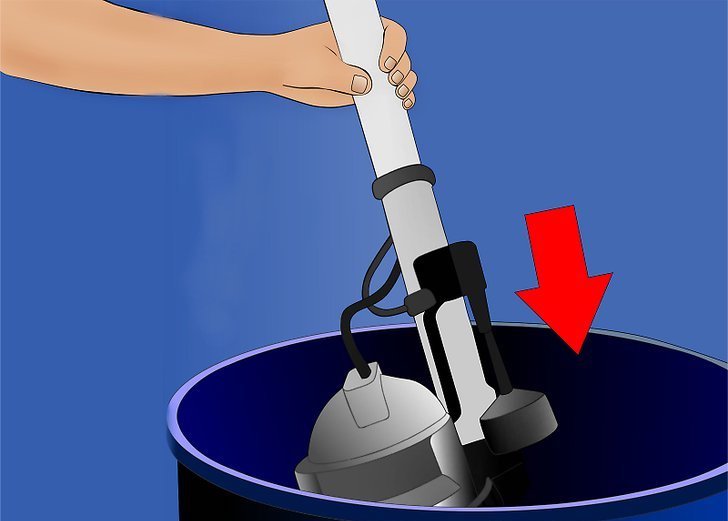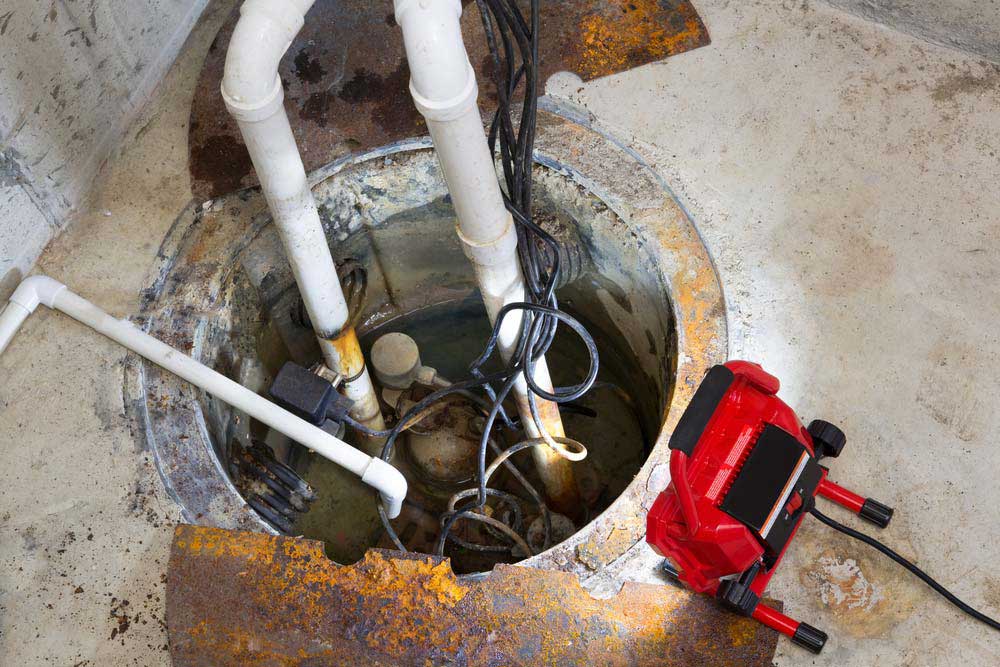My Definitive Guide to Servicing a Sump Pump
My Definitive Guide to Servicing a Sump Pump
Blog Article
Are you currently on the lookout for facts and techniques concerning Cleaning & Maintenance Tips for Your Home's Sump Pump?

Sump pumps are vital elements in lots of homes, especially in locations susceptible to flooding or too much moisture. They help prevent water damage by effectively removing excess water from basements or crawl spaces. However, like any other appliance, sump pumps require normal maintenance to ensure they work efficiently when needed the most. Cleaning your sump pump is an essential part of its maintenance, and recognizing just how to do it correctly can conserve you from pricey fixings and possible catastrophes.
Introduction
Keeping a tidy sump pump is crucial for its correct functioning and long life. Disregarding this crucial task can bring about clogs, breakdowns, and inevitably, water damage to your building. As a result, finding out how to clean a sump pump is crucial for home owners who count on these gadgets to keep their basements completely dry and secured.
Signs of a Dirty Sump Pump
Recognizing when your sump pump needs cleansing is essential for avoiding prospective breakdowns. Some typical signs that show a dirty sump pump consist of strange sounds throughout procedure, reduced water flow, and visible particles in the pit. If you notice any one of these symptoms, it's vital to cleanse your sump pump promptly to prevent any kind of additional concerns.
Planning for Cleansing
Before you begin cleaning your sump pump, it's important to take some safety and security preventative measures. Beginning by shutting off the power to the pump to avoid any type of electric accidents. In addition, wear ideal safety gear, such as handwear covers and goggles, to secure on your own from dirt, particles, and possible pathogens.
Comprehending the Sump Pump
Prior to diving into the cleaning procedure, it's necessary to have a fundamental understanding of just how a sump pump functions. Commonly mounted in a pit or basin below the cellar flooring, a sump pump consists of numerous key parts, including a pump, a float button, and a discharge pipeline. When water gathers in the pit, the float switch turns on the pump, which after that pumps the water out through the discharge pipe, away from the structure's structure.
Step-by-step Overview to Cleansing a Sump Pump
Shutting Off the Power
Begin by separating the power supply to the sump pump to prevent any kind of accidents while cleaning.
Checking for Appropriate Functioning
Prior to re-installing the pump, perform a quick examination to make sure that the float switch activates the pump appropriately. Pour some water into the sump pit and observe the pump's operation. If everything is operating appropriately, you can reassemble the pump and reconnect the power supply.
Eliminating Debris and Dust
Use a container or a scoop to remove any kind of noticeable particles, dirt, or sediment from the sump pit. Dispose of the debris properly to stop it from obstructing the pump or the discharge pipeline.
Cleansing the Pump and Drift Switch Over
When the pit is clear of particles, carefully remove the pump from the pit. Inspect the pump and the float button for any indications of damages or wear. Utilize a soft brush or fabric to clean up the surface areas and remove any collected gunk.
Flushing the System
After cleaning the pump and float button, purge the sump pit with clean water to remove any kind of staying dirt or sediment. This will certainly assist make sure that the pump runs efficiently and efficiently.
Maintenance Tips to Maintain Your Sump Pump Clean
Along with periodic cleaning, there are a number of maintenance ideas you can follow to maintain your sump pump in optimum problem:
Conclusion
Cleansing your sump pump is an essential element of its upkeep and makes sure that it runs successfully when you need it the most. By adhering to the actions detailed in this overview and including normal maintenance right into your regimen, you can expand the life-span of your sump pump and safeguard your home from water damages.
6 STEPS ON HOW TO CLEAN A SUMP PUMP PROPERLY
UNDERSTANDING SUMP PUMPS
Your sump pump plays a crucial role in protecting your home by managing and removing excess water. It primarily functions as a “shield”, guarding your basement against the damaging effects of water accumulation. The pump is housed in a sump pit in the lowest part of your basement, and its job is to pump out any water that collects there.
During heavy rainfalls or when snow melts rapidly, water can infiltrate your basement, posing potential risks like flooding, structural damage, and harmful mold growth. Here, the sump pump springs into action, pumping out the intruding water and directing it away from your home.
SAFETY FIRST
Before cleaning, remember to prioritize safety. Disconnect the sump pump from the power source to prevent any accidental electric shocks. Also, wear sturdy gloves to protect your hands from any sharp or dirty components within the pump.
REMOVE THE SUMP PUMP
After ensuring your safety, the next step is to remove the sump pump from its pit. Doing this might require careful maneuvering as you don’t want to damage any pump components. Once removed, clean the sump pit to remove any accumulated debris or sludge.
INSPECT THE PUMP
Inspect the pump for any visible signs of wear or damage. Check the power cord, float switch, and impeller housing. If any components look worn out or damaged, consider replacing them to ensure optimal performance.
CLEAN THE PUMP
Thoroughly clean the pump with warm, soapy water. Make sure to rid it of any dirt, gravel, or other debris that might impede its performance. You can use a toothbrush to clean the small, hard-to-reach parts of the pump.
REINSTALL THE SUMP PUMP
Reinstall the pump into the sump pit Make sure it’s positioned correctly to remove the water effectively Once it’s back in place, reconnect it to the power source TEST THE PUMP
Finally, pour some water into the pit to ensure the pump works correctly. It should start automatically and begin pumping out the water; if it doesn’t, check the power source and the positioning of the pump.
Remember, while cleaning your sump pump is an essential part of home maintenance, hiring a professional plumber for a thorough inspection and cleaning at least once a year is also important. This will ensure that your pump is in optimal condition, ready to protect your home from potential water damage.
BEST PRACTICES FOR CLEANING SUMP PUMP DISCHARGE PIPES
Regular Inspection: Regularly inspect your discharge pipes, especially during heavy rainfall or snowmelt periods. Look for any signs of blockage or damage. Early detection of problems can prevent serious issues down the line. Periodic Cleaning: Over time, sediment and debris can accumulate in the discharge pipes, impeding the flow of water. Regular cleaning helps keep the pipes clear and functioning efficiently. You can use a high-pressure water jet to effectively clean the pipes. Insulation During Winter: In colder climates, discharge pipes can freeze, blocking the outflow of water. Protect your discharge pipes from freezing temperatures by insulating them with foam pipe insulation. This will ensure the sump pump can continue to discharge water even in freezing conditions. Proper Positioning: The discharge pipe should be positioned to direct water away from your home’s foundation. Improper positioning can lead to water seeping back into the basement. Ensure the pipe is long enough and angled correctly. Installation of a Check Valve: A check valve prevents water from flowing back into your sump pit after the pump has pushed it out. Installing a check valve helps maintain the efficiency of your sump pump and reduces the risk of flooding. Minimize Pipe Turns: Every curve or turn in the discharge pipe can decrease the efficiency of water flow. By minimizing turns and bends in your discharge pipe, you can increase the efficiency of your sump pump. https://www.fullspeedplumbing.com/how-to-clean-a-sump-pump-properly9999/

Do you appreciate reading about How To Effectively Clean A Sump Pump? Create a review further down. We would be delighted to listen to your ideas about this review. We are looking forward to see you back again in the near future. Do you know about someone else who is in the market for the topic? Do not hesitate to promote it. Thanks for your time invested reading it.
Call Today Report this page